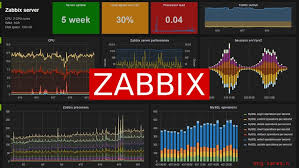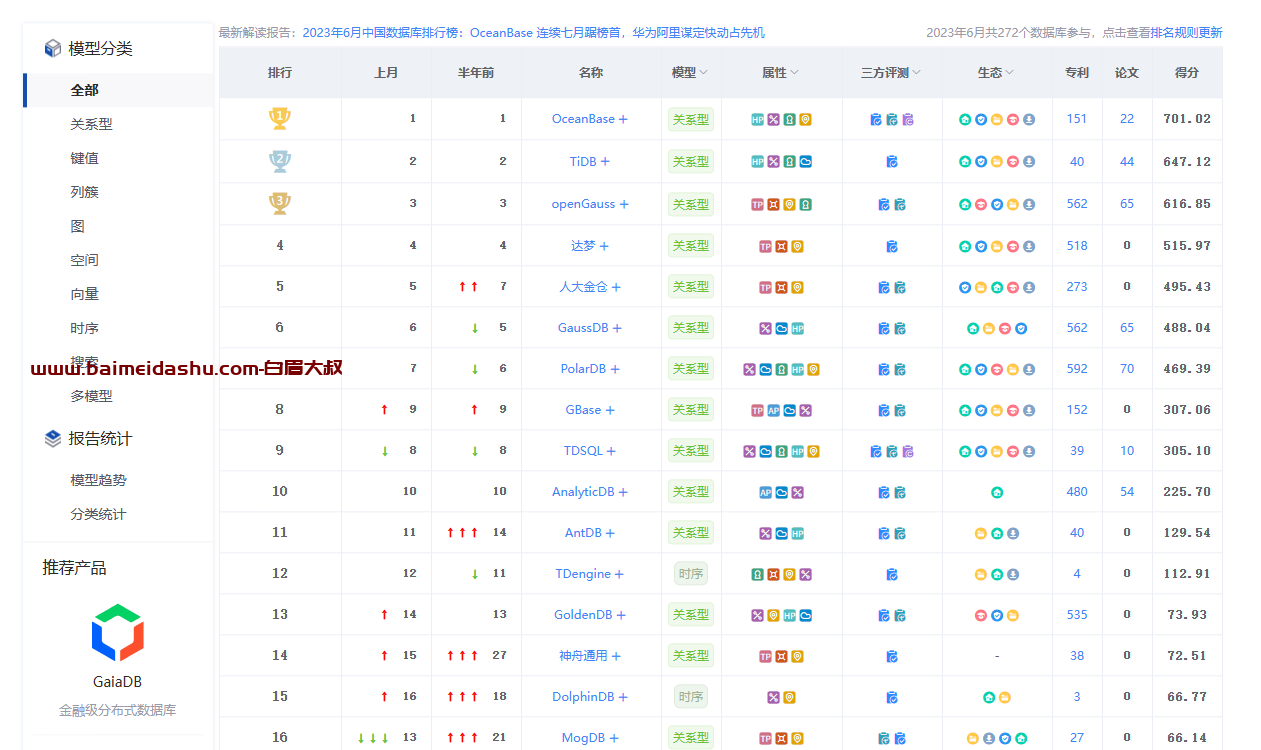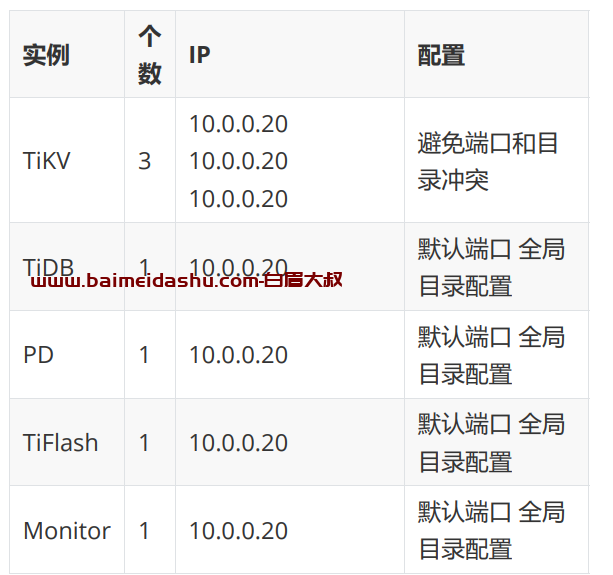1.什么是tensorflow?
TensorFlow名字的由来就是张量(Tensor)在计算图(Computational Graph)里的流动(Flow),如图。它的基础就是前面介绍的基于计算图的自动微分,除了自动帮你求梯度之外,它也提供了各种常见的操作(op,也就是计算图的节点),常见的损失函数,优化算法。
-
TensorFlow 是一个开放源代码软件库,用于进行高性能数值计算。借助其灵活的架构,用户可以轻松地将计算工作部署到多种平台(CPU、GPU、TPU)和设备(桌面设备、服务器集群、移动设备、边缘设备等)。https://www.tensorflow.org/tutorials/?hl=zh-cnwww.tensorflow.org/tutorials/?hl=zh-cn(opens new window)
-
TensorFlow 是一个用于研究和生产的开放源代码机器学习库。TensorFlow 提供了各种 API,可供初学者和专家在桌面、移动、网络和云端环境下进行开发。
-
TensorFlow是采用数据流图(data flow graphs)来计算,所以首先我们得创建一个数据流流图,然后再将我们的数据(数据以张量(tensor)的形式存在)放在数据流图中计算. 节点(Nodes)在图中表示数学操作,图中的边(edges)则表示在节点间相互联系的多维数据数组, 即张量(tensor)。训练模型时tensor会不断的从数据流图中的一个节点flow到另一节点, 这就是TensorFlow名字的由来。 张量(Tensor):张量有多种. 零阶张量为 纯量或标量 (scalar) 也就是一个数值. 比如 [1],一阶张量为 向量 (vector), 比如 一维的 [1, 2, 3],二阶张量为 矩阵 (matrix), 比如 二维的 [[1, 2, 3],[4, 5, 6],[7, 8, 9]],以此类推, 还有 三阶 三维的 ... 张量从流图的一端流动到另一端的计算过程。它生动形象地描述了复杂数据结构在人工神经网中的流动、传输、分析和处理模式。
在机器学习中,数值通常由4种类型构成: (1)标量(scalar):即一个数值,它是计算的最小单元,如"1"或"3.2"等。 (2)向量(vector):由一些标量构成的一维数组,如[1, 3.2, 4.6]等。 (3)矩阵(matrix):是由标量构成的二维数组。 (4)张量(tensor):由多维(通常)数组构成的数据集合,可理解为高维矩阵。
tensorflow的基本概念
-
图:描述了计算过程,Tensorflow用图来表示计算过程
-
张量:Tensorflow 使用tensor表示数据,每一个tensor是一个多维化的数组
-
操作:图中的节点为op,一个op获得/输入0个或者多个Tensor,执行并计算,产生0个或多个Tensor
-
会话:session tensorflow的运行需要再绘话里面运行
tensorflow写代码流程
-
定义变量占位符
-
根据数学原理写方程
-
定义损失函数cost
-
定义优化梯度下降 GradientDescentOptimizer
-
session 进行训练,for循环
-
保存saver
2.环境准备
整合步骤
-
模型构建:首先,我们需要在TensorFlow中定义并训练深度学习模型。这可能涉及选择合适的网络结构、优化器和损失函数等。
-
训练数据准备:接下来,我们需要准备用于训练和验证模型的数据。这可能包括数据清洗、标注和预处理等步骤。
-
REST API设计:为了与TensorFlow模型进行交互,我们需要在SpringBoot中创建一个REST API。这可以使用SpringBoot的内置功能来实现,例如使用Spring MVC或Spring WebFlux。
-
模型部署:在模型训练完成后,我们需要将其部署到SpringBoot应用中。为此,我们可以使用TensorFlow的Java API将模型导出为ONNX或SavedModel格式,然后在SpringBoot应用中加载并使用。
在整合过程中,有几个关键点需要注意。首先,防火墙设置可能会影响TensorFlow训练过程中的网络通信。确保你的防火墙允许TensorFlow访问其所需的网络资源,以免出现训练中断或模型性能下降的问题。其次,要关注版本兼容性。SpringBoot和TensorFlow都有各自的版本更新周期,确保在整合时使用兼容的版本可以避免很多不必要的麻烦。
模型下载
模型构建和模型训练这块设计到python代码,这里跳过,感兴趣的可以下载源代码自己训练模型,咱们直接下载训练好的模型
https://storage.googleapis.com/download.tensorflow.org/models/inception_v3_2016_08_28_frozen.pb.tar.gz
下载好了,解压放在/resources/inception_v3目录下
3.代码工程
实验目的
实现图片检测
pom.xml
<?xml version="1.0" encoding="UTF-8"?><project xmlns="http://maven.apache.org/POM/4.0.0" xmlns:xsi="http://www.w3.org/2001/XMLSchema-instance" xsi:schemaLocation="http://maven.apache.org/POM/4.0.0 http://maven.apache.org/xsd/maven-4.0.0.xsd"> <parent> <artifactId>springboot-demo</artifactId> <groupId>com.et</groupId> <version>1.0-SNAPSHOT</version> </parent> <modelVersion>4.0.0</modelVersion>
<artifactId>Tensorflow</artifactId>
<properties> <maven.compiler.source>11</maven.compiler.source> <maven.compiler.target>11</maven.compiler.target> </properties> <dependencies>
<dependency> <groupId>org.springframework.boot</groupId> <artifactId>spring-boot-starter-web</artifactId> </dependency>
<dependency> <groupId>org.springframework.boot</groupId> <artifactId>spring-boot-autoconfigure</artifactId> </dependency> <dependency> <groupId>org.springframework.boot</groupId> <artifactId>spring-boot-starter-test</artifactId> <scope>test</scope> </dependency> <dependency> <groupId>org.tensorflow</groupId> <artifactId>tensorflow-core-platform</artifactId> <version>0.5.0</version> </dependency> <dependency> <groupId>org.projectlombok</groupId> <artifactId>lombok</artifactId> </dependency>
<dependency> <groupId>jmimemagic</groupId> <artifactId>jmimemagic</artifactId> <version>0.1.2</version> </dependency> <dependency> <groupId>jakarta.platform</groupId> <artifactId>jakarta.jakartaee-api</artifactId> <version>9.0.0</version> </dependency> <dependency> <groupId>commons-io</groupId> <artifactId>commons-io</artifactId> <version>2.16.1</version> </dependency> <dependency> <groupId>org.springframework.restdocs</groupId> <artifactId>spring-restdocs-mockmvc</artifactId> <scope>test</scope> </dependency>
</dependencies></project>
controller
package com.et.tf.api;
import java.io.IOException;
import com.et.tf.service.ClassifyImageService;import net.sf.jmimemagic.Magic;import net.sf.jmimemagic.MagicMatch;import org.springframework.beans.factory.annotation.Autowired;import org.springframework.web.bind.annotation.CrossOrigin;import org.springframework.web.bind.annotation.PostMapping;import org.springframework.web.bind.annotation.RequestMapping;import org.springframework.web.bind.annotation.RequestParam;import org.springframework.web.bind.annotation.RestController;import org.springframework.web.multipart.MultipartFile;
@RestController@RequestMapping("/api")public class AppController { @Autowired ClassifyImageService classifyImageService;
@PostMapping(value = "/classify") @CrossOrigin(origins = "*") public ClassifyImageService.LabelWithProbability classifyImage(@RequestParam MultipartFile file) throws IOException { checkImageContents(file); return classifyImageService.classifyImage(file.getBytes()); }
@RequestMapping(value = "/") public String index() { return "index"; }
private void checkImageContents(MultipartFile file) { MagicMatch match; try { match = Magic.getMagicMatch(file.getBytes()); } catch (Exception e) { throw new RuntimeException(e); } String mimeType = match.getMimeType(); if (!mimeType.startsWith("image")) { throw new IllegalArgumentException("Not an image type: " + mimeType); } }
}
service
package com.et.tf.service;
import jakarta.annotation.PreDestroy;import java.util.Arrays;import java.util.List;import lombok.AllArgsConstructor;import lombok.Data;import lombok.NoArgsConstructor;import lombok.extern.slf4j.Slf4j;import org.springframework.beans.factory.annotation.Value;import org.springframework.stereotype.Service;import org.tensorflow.Graph;import org.tensorflow.Output;import org.tensorflow.Session;import org.tensorflow.Tensor;import org.tensorflow.ndarray.NdArrays;import org.tensorflow.ndarray.Shape;import org.tensorflow.ndarray.buffer.FloatDataBuffer;import org.tensorflow.op.OpScope;import org.tensorflow.op.Scope;import org.tensorflow.proto.framework.DataType;import org.tensorflow.types.TFloat32;import org.tensorflow.types.TInt32;import org.tensorflow.types.TString;import org.tensorflow.types.family.TType;
//Inspired from https://github.com/tensorflow/tensorflow/blob/master/tensorflow/java/src/main/java/org/tensorflow/examples/LabelImage.java@Service@Slf4jpublic class ClassifyImageService {
private final Session session; private final List<String> labels; private final String outputLayer;
private final int W; private final int H; private final float mean; private final float scale;
public ClassifyImageService( Graph inceptionGraph, List<String> labels, @Value("${tf.outputLayer}") String outputLayer, @Value("${tf.image.width}") int imageW, @Value("${tf.image.height}") int imageH, @Value("${tf.image.mean}") float mean, @Value("${tf.image.scale}") float scale ) { this.labels = labels; this.outputLayer = outputLayer; this.H = imageH; this.W = imageW; this.mean = mean; this.scale = scale; this.session = new Session(inceptionGraph); }
public LabelWithProbability classifyImage(byte[] imageBytes) { long start = System.currentTimeMillis(); try (Tensor image = normalizedImageToTensor(imageBytes)) { float[] labelProbabilities = classifyImageProbabilities(image); int bestLabelIdx = maxIndex(labelProbabilities); LabelWithProbability labelWithProbability = new LabelWithProbability(labels.get(bestLabelIdx), labelProbabilities[bestLabelIdx] * 100f, System.currentTimeMillis() - start); log.debug(String.format( "Image classification [%s %.2f%%] took %d ms", labelWithProbability.getLabel(), labelWithProbability.getProbability(), labelWithProbability.getElapsed() ) ); return labelWithProbability; } }
private float[] classifyImageProbabilities(Tensor image) { try (Tensor result = session.runner().feed("input", image).fetch(outputLayer).run().get(0)) { final Shape resultShape = result.shape(); final long[] rShape = resultShape.asArray(); if (resultShape.numDimensions() != 2 || rShape[0] != 1) { throw new RuntimeException( String.format( "Expected model to produce a [1 N] shaped tensor where N is the number of labels, instead it produced one with shape %s", Arrays.toString(rShape) )); } int nlabels = (int) rShape[1]; FloatDataBuffer resultFloatBuffer = result.asRawTensor().data().asFloats(); float[] dst = new float[nlabels]; resultFloatBuffer.read(dst); return dst; } }
private int maxIndex(float[] probabilities) { int best = 0; for (int i = 1; i < probabilities.length; ++i) { if (probabilities[i] > probabilities[best]) { best = i; } } return best; }
private Tensor normalizedImageToTensor(byte[] imageBytes) { try (Graph g = new Graph(); TInt32 batchTensor = TInt32.scalarOf(0); TInt32 sizeTensor = TInt32.vectorOf(H, W); TFloat32 meanTensor = TFloat32.scalarOf(mean); TFloat32 scaleTensor = TFloat32.scalarOf(scale); ) { GraphBuilder b = new GraphBuilder(g); //Tutorial python here: https://github.com/tensorflow/tensorflow/tree/master/tensorflow/examples/label_image // Some constants specific to the pre-trained model at: // https://storage.googleapis.com/download.tensorflow.org/models/inception_v3_2016_08_28_frozen.pb.tar.gz // // - The model was trained with images scaled to 299x299 pixels. // - The colors, represented as R, G, B in 1-byte each were converted to // float using (value - Mean)/Scale.
// Since the graph is being constructed once per execution here, we can use a constant for the // input image. If the graph were to be re-used for multiple input images, a placeholder would // have been more appropriate. final Output input = b.constant("input", TString.tensorOfBytes(NdArrays.scalarOfObject(imageBytes))); final Output output = b.div( b.sub( b.resizeBilinear( b.expandDims( b.cast(b.decodeJpeg(input, 3), DataType.DT_FLOAT), b.constant("make_batch", batchTensor) ), b.constant("size", sizeTensor) ), b.constant("mean", meanTensor) ), b.constant("scale", scaleTensor) ); try (Session s = new Session(g)) { return s.runner().fetch(output.op().name()).run().get(0); } } }
static class GraphBuilder { final Scope scope;
GraphBuilder(Graph g) { this.g = g; this.scope = new OpScope(g); }
Output div(Output x, Output y) { return binaryOp("Div", x, y); }
Output sub(Output x, Output y) { return binaryOp("Sub", x, y); }
Output resizeBilinear(Output images, Output size) { return binaryOp("ResizeBilinear", images, size); }
Output expandDims(Output input, Output dim) { return binaryOp("ExpandDims", input, dim); }
Output cast(Output value, DataType dtype) { return g.opBuilder("Cast", "Cast", scope).addInput(value).setAttr("DstT", dtype).build().output(0); }
Output decodeJpeg(Output contents, long channels) { return g.opBuilder("DecodeJpeg", "DecodeJpeg", scope) .addInput(contents) .setAttr("channels", channels) .build() .output(0); }
Output<? extends TType> constant(String name, Tensor t) { return g.opBuilder("Const", name, scope) .setAttr("dtype", t.dataType()) .setAttr("value", t) .build() .output(0); }
private Output binaryOp(String type, Output in1, Output in2) { return g.opBuilder(type, type, scope).addInput(in1).addInput(in2).build().output(0); }
private final Graph g; }
@PreDestroy public void close() { session.close(); }
@Data @NoArgsConstructor @AllArgsConstructor public static class LabelWithProbability { private String label; private float probability; private long elapsed; }}
application.yaml
tf: frozenModelPath: inception-v3/inception_v3_2016_08_28_frozen.pb labelsPath: inception-v3/imagenet_slim_labels.txt outputLayer: InceptionV3/Predictions/Reshape_1 image: width: 299 height: 299 mean: 0 scale: 255
logging.level.net.sf.jmimemagic: WARNspring: servlet: multipart: max-file-size: 5MB
Application.java
package com.et.tf;
import java.io.IOException;import java.nio.charset.StandardCharsets;import java.util.List;import java.util.stream.Collectors;import lombok.extern.slf4j.Slf4j;import org.apache.commons.io.IOUtils;import org.springframework.beans.factory.annotation.Value;import org.springframework.boot.SpringApplication;import org.springframework.boot.autoconfigure.SpringBootApplication;import org.springframework.context.annotation.Bean;import org.springframework.core.io.ClassPathResource;import org.springframework.core.io.FileSystemResource;import org.springframework.core.io.Resource;import org.tensorflow.Graph;import org.tensorflow.proto.framework.GraphDef;
@SpringBootApplication@Slf4jpublic class Application {
public static void main(String[] args) { SpringApplication.run(Application.class, args); }
@Bean public Graph tfModelGraph(@Value("${tf.frozenModelPath}") String tfFrozenModelPath) throws IOException { Resource graphResource = getResource(tfFrozenModelPath);
Graph graph = new Graph(); graph.importGraphDef(GraphDef.parseFrom(graphResource.getInputStream())); log.info("Loaded Tensorflow model"); return graph; }
private Resource getResource(@Value("${tf.frozenModelPath}") String tfFrozenModelPath) { Resource graphResource = new FileSystemResource(tfFrozenModelPath); if (!graphResource.exists()) { graphResource = new ClassPathResource(tfFrozenModelPath); } if (!graphResource.exists()) { throw new IllegalArgumentException(String.format("File %s does not exist", tfFrozenModelPath)); } return graphResource; }
@Bean public List<String> tfModelLabels(@Value("${tf.labelsPath}") String labelsPath) throws IOException { Resource labelsRes = getResource(labelsPath); log.info("Loaded model labels"); return IOUtils.readLines(labelsRes.getInputStream(), StandardCharsets.UTF_8).stream() .map(label -> label.substring(label.contains(":") ? label.indexOf(":") + 1 : 0)).collect(Collectors.toList()); }}
以上只是一些关键代码,所有代码请参见下面代码仓库
代码仓库
- https://github.com/Harries/springboot-demo
4.测试
启动 Spring Boot应用程序
测试图片分类
访问http://127.0.0.1:8080/,上传一张图片,点击分类

5.引用
-
https://www.tensorflow.org/
-
http://www.liuhaihua.cn/archives/710745.html
 51工具盒子
51工具盒子





